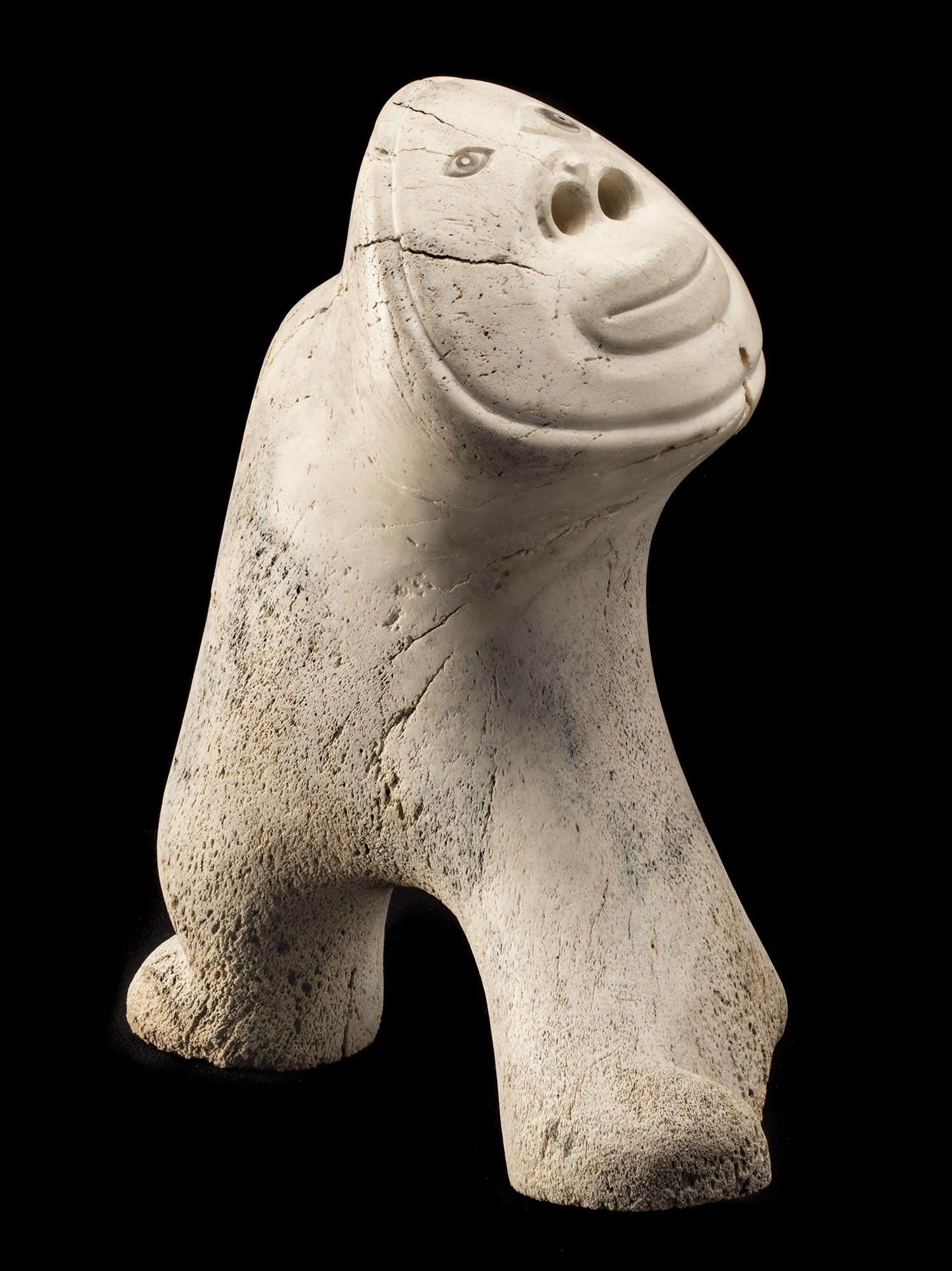Lot 40
KAROO ASHEVAK (1940-1974) TALOYOAK (SPENCE BAY)
Spirit, 1972
whale bone, antler, and stone, 14.5 x 6 x 13 in (36.8 x 15.2 x 33 cm)
signed "ᑲᔪ".
ESTIMATE: $40,000 — $60,000
PRICE REALIZED: $45,600
Provenance
Galerie Lippel, Montreal;
Acquired from the above by a Private Collection, Montreal.
Exhibited and Published
American Indian Arts Centre, Karoo Ashevak: Spirits (New York, 1973), cat 11;
Also in Galerie Lippel, Inuit Sculpture 1974 (Montreal, 1974), p. 43.
Each sculpture is an integral unit representing a particular being, without reference to specific myths, stories or daily events…The images in Ashevak's sculpture originate in the general culture and tradition of the Eskimo, but the works are not so specific in reference as to be bound by this ethnic origin…The cultural heritage and consequent meaning strengthen and enrich the images but do not restrict them - the work can speak to those who have no knowledge of the Eskimo or his culture [1].
In the early 1970s Karoo Ashevak's work most definitely did speak to a surprisingly wide range of art collectors and critics, and continues to do so today. Jean Blodgett's explanation of the wide appeal of Karoo's sculpture is bang on. Karoo's ability to communicate psychological, emotional and/or spiritual meaning directly to the viewer - coupled of course with his brilliant imagination and extraordinary skill as a sculptor - will forever make his work compelling.
The 1973 Karoo Ashevak: Spirits catalogue (published in January 1973) indicates how explosively creative the year 1972 was in Karoo's artistic development. Karoo's first solo show had taken place in March 1972 at the Innuit Gallery of Eskimo Art in Toronto; the fifteen works illustrated in the New York show catalogue reveal an astonishing variety and richness of sculptural form, as well as the artist's incredible mastery of whale bone and other organic materials.
There is a certain "family resemblance" between Spirit and other works in the New York show - catalogue nos. 3 and 7 come especially to mind — but Spirit stands out for its purity of form and elegance. Jean Blodgett has pointed out that by 1972 Karoo had already created some of his most complex works [2], so perhaps we can see Spirit coming across as a conscious "getting back to basics" by the artist. As Judy McGrath, who knew Karoo well, has written: "Ashevak always begins his carvings with an idea in mind and then chooses material of appropriate sizes and shapes" [3]. So we know that Karoo had something pure in mind; something pristine, elegant, and yes, just a bit phallic. The sculpture's very simplicity allows us to focus on the supremely beautiful face of the spirit. Even without shamanic trappings - or perhaps because of that - Spirit is arguably Karoo's most spiritually uplifting work.
1. Jean Blodgett, Karoo Ashevak (WAG, 1977), unpaginated.
2. ibid.
3. Judy McGrath, "Introduction" in Karoo Ashevak, Spirits (New York: American Indian Arts Center, 1973), unpaginated.
References: Jean Blodgett's landmark retrospective show and catalogue, Karoo Ashevak (Winnipeg Art Gallery, 1977) illustrates ten sculptures from 1972 (cats. 18-27). See also Gerald McMaster ed., Inuit Modern (Toronto: AGO, 2010), pp. 118-119. For a similarly transcendent sculpture by Karoo, from the same period, see Walker's Auctions, May 2018, Lot 35. For a small sculpture by Karoo, Spirit Face and Hand from c. 1971-72, with similarly elegant facial features, see Walker's Auctions, May 2013, Lot 31.

